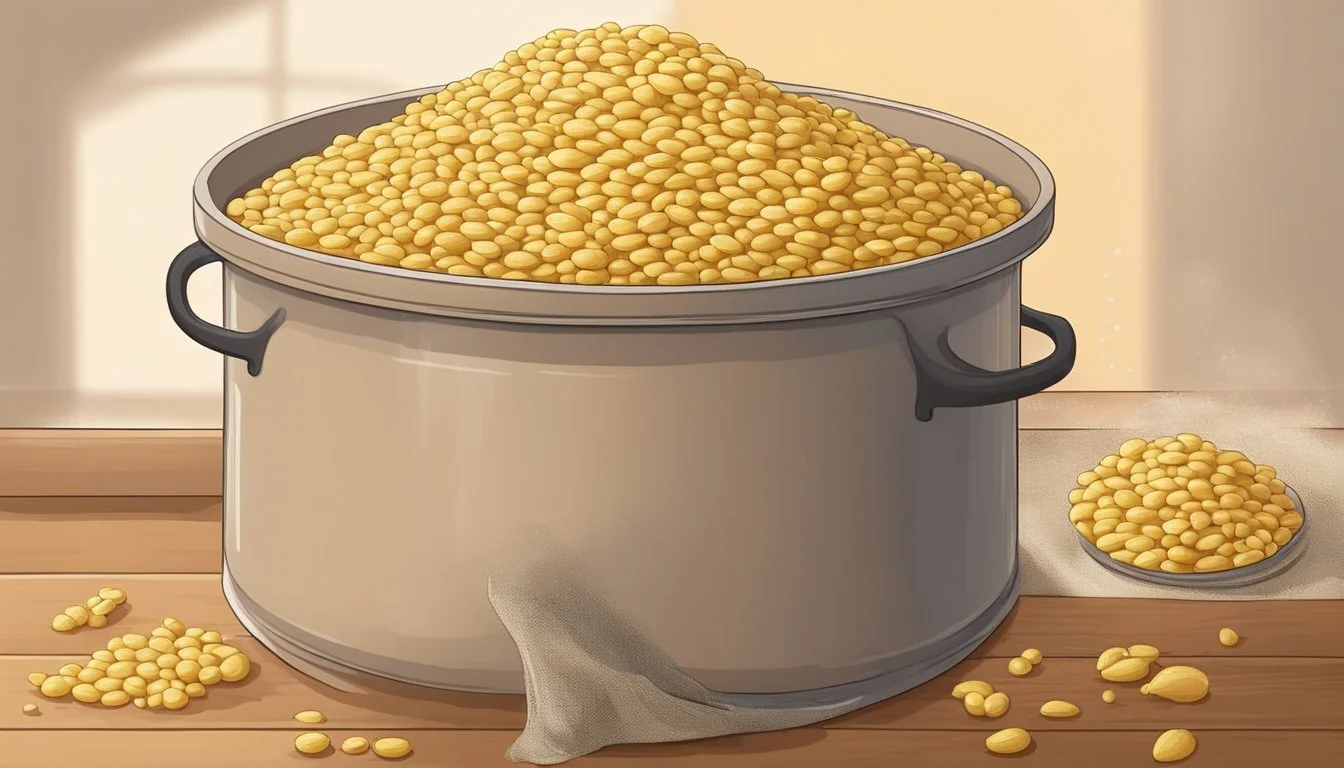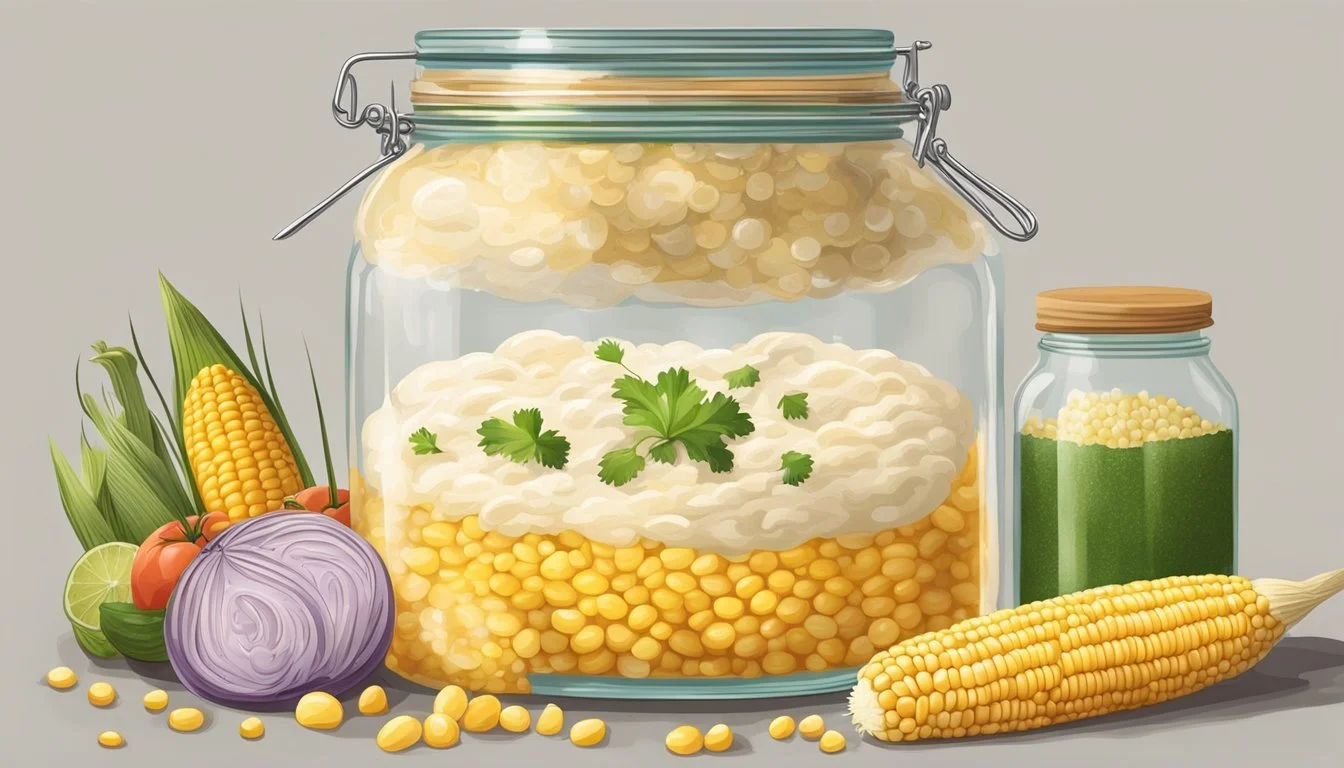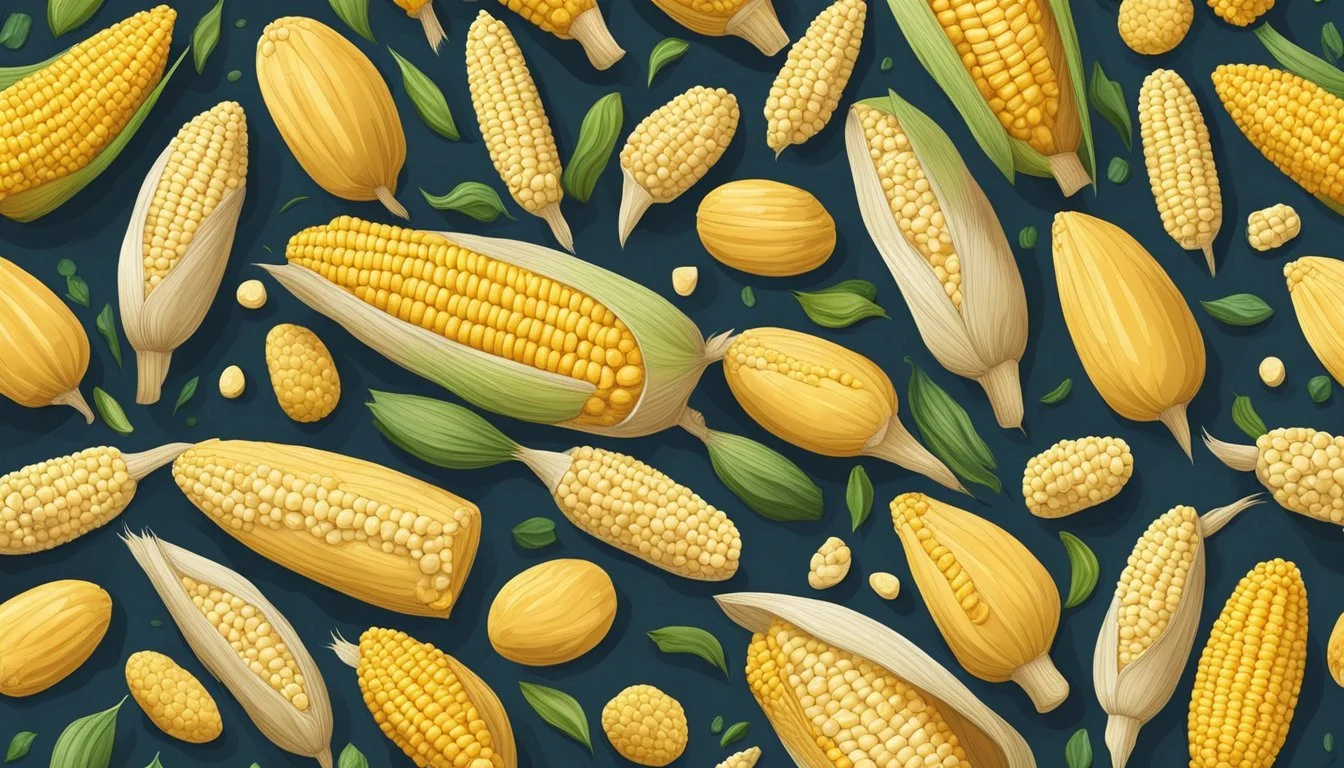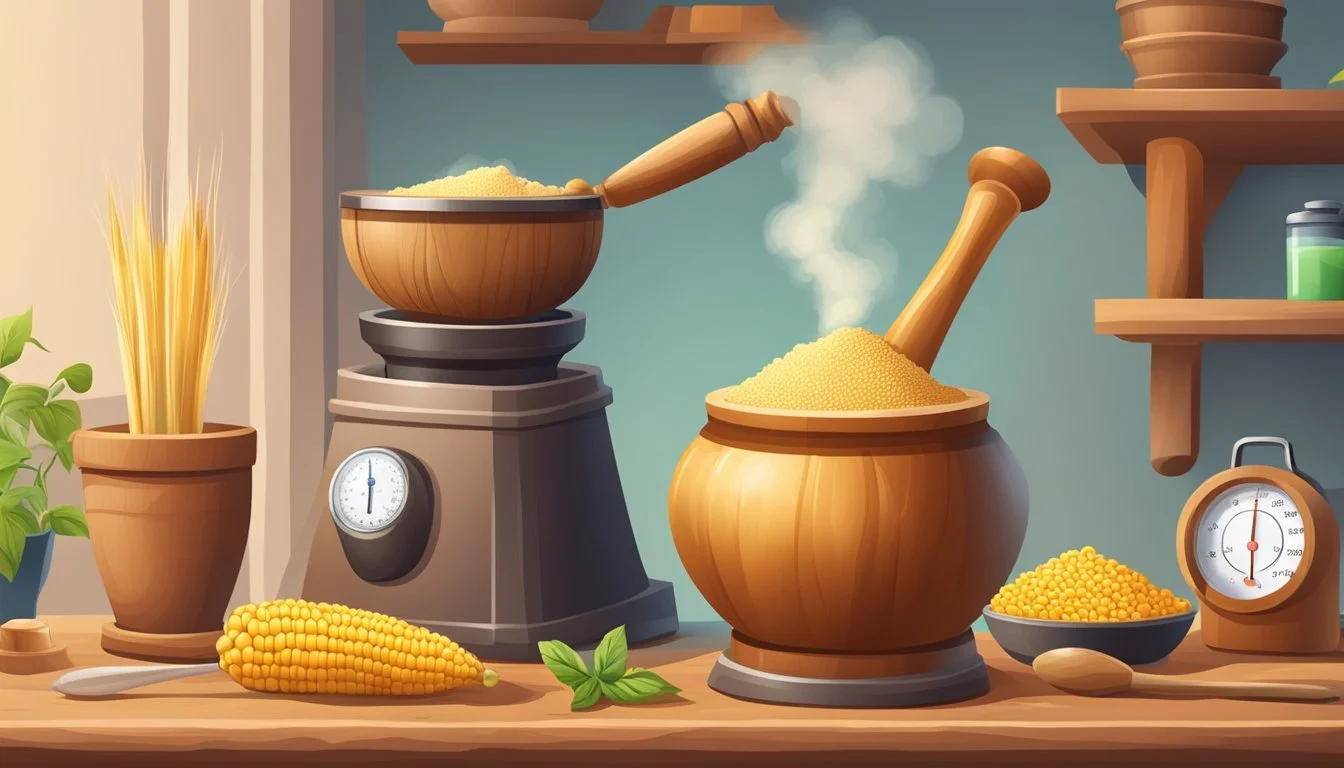How to Ferment Pozol
A Step-by-Step Guide to Mexican Fermented Corn Dough
Pozol is a traditional Mexican beverage with ancient roots, tracing back to prehispanic times. It is produced through fermentation of nixtamalized maize dough, a process where maize is cooked with lime, then ground. This beverage holds a special place in the daily diet of various communities in southeastern Mexico, offering a unique combination of cultural heritage and nutritional benefits.
The preparation of pozol involves a spontaneous fermentation process that is pivotal to its distinct taste and nutritional profile. Key to this process is a diverse microbial community, primarily composed of lactic acid bacteria, which thrive within the dough environment. Their activity reduces the pH of the dough, creating a mildly sour and refreshing beverage consumed by many to this day.
Understanding the fermentation of pozol is more than a culinary pursuit; it's a glimpse into the intricate relationship between culture, food science, and tradition. The natural fermentation that pozol undergoes not only preserves the dough but also enhances its flavor profile, making it a beloved element of Mexican gastronomy. Through its continued consumption, pozol remains an enduring testament to the time-honored culinary practices of Mexico.
History and Cultural Significance
Pozol is a traditional fermented food that has deep roots in the history of southeast Mexico. Originating from the indigenous populations of the region, it is more than just a form of sustenance; it represents a significant part of these cultures' identities. It is crafted from fermented Mexican maize dough, known for its refreshing and nourishing qualities.
The drink has been a staple among the indigenous communities for centuries, offering a practical and nutritional way to preserve maize. Indigenous fermented foods like Pozol were pivotal for these populations, especially during long journeys and as a means to combat diseases, due to the fermentation process which could safely extend its preservation.
Southeast Mexico, which includes the states of Campeche, Chiapas, and Tabasco, remains the primary region where Pozol is integral to daily life. In these areas, people often consume Pozol as part of their dietary regimen, celebrating its nutritional properties and its place in historical and contemporary cuisine.
Here's a brief breakdown:
Origins: Pre-Columbian Mesoamerica
Key Ingredients: Corn dough, cocoa (in some variants)
Primary Regions: Campeche, Chiapas, Tabasco
Significance: Cultural emblem, nutritional beverage, method of preservation
This drink exemplifies the ingenious methods by which indigenous peoples utilized local resources to create enduring food traditions. Despite changes over time and the introduction of modern foods, Pozol remains a beloved feature in the diets of many southeastern Mexican communities, signifying their reverence for tradition and the ancestral knowledge passed down through generations.
Scientific Background of Pozol Fermentation
Pozol fermentation is a microbial process involving a consortium of microorganisms including lactic acid bacteria (LAB) and yeast. These microorganisms play crucial roles in the transformation of maize dough into a nutritious fermented food. During the fermentation, LAB dominates, leading to the production of lactic acid, which decreases the pH of the dough from an initial neutral range to about 4.6.
The process begins with nixtamalization, where maize is cooked and steeped in an alkaline solution, usually calcium hydroxide, which partially dissolves the plant cell wall (PCW), enhancing the nutrient availability. Subsequently, the nixtamalized maize is ground and allowed to ferment spontaneously.
Microbial processes in pozol involve both the degradation of maize components and the synthesis of beneficial compounds. The degradation process includes the breakdown of complex carbohydrates into simpler sugars, which serve as substrates for microorganisms. Simultaneously, metabolic activities lead to the production of amino acids and enhance vitamin biosynthesis.
Genomic studies suggest that the genomes of microorganisms in pozol have evolved to thrive in the acidic, anaerobic environment that the fermentation process creates. This adaptation is reflected in the thriving of specific LAB strains and yeasts which contribute to the distinct flavor and texture of pozol.
In the realm of microbiology, the study of pozol provides insights into microbial ecology and traditional food processing methods. Understanding these microbial communities and their metabolic profiles is key to appreciating the complexity and nutritional value of traditional fermented foods like pozol.
Ingredients and Preparations
Making Pozol involves precise ingredient selection and preparation methods that are crucial for achieving the traditional flavor and nutritional value. Detailed here are the steps to select maize, create nixtamal dough, and grind it to the right consistency.
Maize Selection and Preparation
For Pozol, one must select high-quality corn, known as maize, which is the foundational ingredient. Maize high in starch content is preferred for its capacity to ferment well and produce a rich flavor. The preparation starts with the maize being cooked with limestone or cal in a process called nixtamalization. This process not only softens the kernels but also enhances the maize's bioavailability of amino acids and vitamins, including niacin, which is essential for health.
Creating Nixtamal Dough
After nixtamalization, the maize must be thoroughly washed to remove any traces of lime and then left to soak, allowing the kernels to swell. Once the maize is properly cleaned and soaked, it’s ground into a dough-like consistency. This dough, or masa, is the base for Pozol. It’s during this phase that the natural fermentation begins, which will later contribute to Pozol's distinctive sour taste and improve the amino acid profile by increasing levels of essential amino acids.
Grinding Process
The process of grinding the nixtamal is essential for achieving the correct texture of the dough. Traditionally, a stone tool called a metate is used. A finely ground nixtamal dough will result in a smoother Pozol with a more consistent fermentation. Once ground, the dough can be fermented for several days to develop the flavor profile that is characteristic of authentic Pozol.
Fermentation Process
The fermentation of pozol, a traditional Mexican fermented maize dough, involves a dynamic microbial ecosystem where bacteria and yeasts play a crucial role. This process is vital for developing pozol's unique flavor, nutritional properties, and safety as a consumable product.
Initiation of Fermentation
To initiate the fermentation of pozol, corn dough (nixtamal dough) must first be prepared typically through nixtamalization—a process involving the cooking of corn in an alkaline solution. Once the dough is ready, it is left at ambient temperatures, allowing the natural microbiota present to begin the fermentation process. This indigenous microbial community primarily includes a variety of lactic acid bacteria (LAB) and, to a lesser extent, yeasts and fungi which commence the transformation of the dough.
Microbial Community Development
During the fermentation period, the microbial community in pozol undergoes significant changes. Lactic acid bacteria typically dominate the community, promoting the desirable characteristics of pozol through substrate fermentation and sucrose degradation. The enzymatic activities of these microorganisms, including those of the CAZy (Carbohydrate-Active enZymes) family, are essential for metabolizing the carbohydrates within the dough. Yeasts and other fungi may also contribute to the fermentation by breaking down complex sugars and producing aromatic compounds.
Monitoring Fermentation Stages
Pozol fermentation can be monitored at critical time intervals, such as 0, 9, 24, and 48 hours, to evaluate the structural and metabolic transitions within the microbial community. Shotgun metagenomic sequencing allows for the assessment of both the composition of the microbial community and the active metabolic genes related to the fermentation process. Observing these stages is crucial to understanding the microbial dynamics and ensuring the consistent quality and safety of the final fermented product.
Nutritional Properties of Pozol
Pozol boasts a rich nutritional profile that is beneficial for human consumption. It contains a variety of amino acids, which are the building blocks of proteins. These amino acids play a crucial role in muscle development and bodily repair processes.
The fermentation process introduces lactic acid into Pozol, which can act as a preservative and gives the beverage a distinct sour flavor. Lactic acid bacteria are also known to produce B-vitamins during fermentation, thus potentially enriching Pozol with these essential nutrients.
Vitamins, particularly from the B-complex group, are another important nutritional aspect of Pozol. As fermentation progresses, the microbial action may increase the levels of certain B-vitamins, which are vital for energy production and brain health.
An analysis of the nutritional content of Pozol reveals that it can include essential amino acids which the human body is unable to synthesize. These essential amino acids must be obtained through diet, and Pozol can be a valuable source of these nutrients, contributing to an individual's nutritional requirements.
In summary, Pozol is not only a culturally significant beverage but also a nutritionally valuable one, offering a range of amino acids, vitamins, and the benefits of lactic acid. It stands as a testament to the complex and beneficial nature of traditional fermentation practices.
Role of Microorganisms in Pozol
Pozol fermentation is driven by a complex microbiota that includes lactic acid bacteria, yeasts, and other microorganisms. They play a crucial role in shaping the nutritional properties, flavor, and safety of the final beverage.
Dominant Bacterial Strains
The bacterial community in Pozol is predominantly composed of lactic acid bacteria (LAB). These bacteria are crucial for the fermentation process, influencing both the flavor and the safety of Pozol. The major genera found in Pozol's LAB community include Streptococcus, Leuconostoc, Weissella, Lactococcus, and Enterococcus. Enterobacteria are also part of the microbial ecology, although they are reduced in number as the fermentation progresses, due to the decrease in pH from LAB activity.
Streptococcus: Often initiates fermentation, contributing to early acid production.
Leuconostoc: Involved in the breakdown of sugars, it enhances Pozol's unique flavor profile.
Weissella: Aids in the production of lactic acid and can influence Pozol's consistency.
Lactococcus: Contributes to the overall acidity and flavor.
Enterococcus: Can be found in the early stages of fermentation and are important for initial acidification.
Role of Yeasts and Fungi
Yeasts and fungi also inhabit the fermentation ecology of Pozol, with their populations increasing in the later stages of the process. They are important for the development of a range of flavors and can also impact the nutritional aspects of pozol. While the precise species can vary, the presence of these eukaryotic microorganisms is a constant feature.
Yeasts: Contribute to ethyl alcohol, CO2, and other volatile compounds formation, adding to both taste and texture of Pozol.
Moulds and Fungi: Generally less desirable, their growth is restricted by the acidic environment created by lactic acid bacteria, thus ensuring product safetynergy"]);
Yeasts and fungi's activity, alongside that of the bacterial community, culminates in a product that is traditional, refreshing, and embedded with cultural heritage, all resulting from the sophisticated interactions among diverse microorganisms.
Cutting-Edge Research and Techniques
Recent studies utilize metagenomic sequencing to dissect the complex microbial ecology of pozol. This exploration of pozol at the genomic level is advancing understanding of fermentation processes and microbial community functions.
Metagenomic Sequencing
Metagenomic sequencing, particularly shotgun metagenomic sequencing, provides a wealth of information on microbial communities within pozol. Researchers sample the fermenting dough at distinct time intervals—such as 0, 9, 24, and 48 hours—to capture the dynamic changes in bacterial compositions and activities. By deploying bioinformatics tools to analyze shotgun metagenomic data, insights are gained into the structural shifts of the bacterial communities and the metabolic genes pivotal for substrate fermentation.
Time Points Sampled: 0, 9, 24, 48 hours
Tools Utilized: Bioinformatics, Shotgun Metagenomic Sequencing
Goals:
To identify structural changes in microbial communities.
To catalog metabolic genes involved in fermentation.
Analysis of Microbial Genomes
The analysis of microbial genomes, particularly metagenomic assembled genomes (MAGs), has significant implications for the understanding of microbial ecology within pozol. By examining the MAGs, researchers have discovered specific carbohydrate-active enzymes (CAZymes) encoded by the genomes, which play a crucial role in the fermentation process and in defining the nutritional properties of pozol. These findings are made available through databases like PubMed and extend the scientific understanding of traditional fermentation systems.
Key Elements Studied:
Metagenomic assembled genomes (MAGs)
Carbohydrate-active enzymes (CAZymes)
Impact:
Elucidates the role of specific enzymes in pozol fermentation.
Enhances knowledge regarding the safety and nutritional properties of pozol.
Health and Safety Considerations
When fermenting pozol, it is essential to consider the safety of the product, as its microbial flora plays a crucial role in its nutritional properties, taste, and safety. Maintaining a clean fermentation environment prevents the growth of harmful microorganisms, such as Enterobacteriaceae, which can contaminate food and potentially cause illness.
Safe Fermentation Practices:
Temperature Control:
Fermentation should occur at controlled temperatures to inhibit the growth of pathogenic bacteria.
Hygiene:
All equipment and surfaces must be sanitized before use.
Personal cleanliness is vital to avoid contamination.
Monitoring Microbial Flora:
Beneficial bacteria are necessary for the fermentation process, and their growth should be encouraged, while harmful bacteria must be monitored and controlled.
EPS Production:
Exopolysaccharides (EPS) can be produced by certain lactic acid bacteria during fermentation, contributing to the viscosity and texture of pozol. While generally regarded as safe, consistent quality control is important to ensure desirable levels of EPS.
Safety Measures:
Use Pure Cultures: When possible, using a pure culture starter can help control the fermentation process and reduce the risk of contamination.
Testing:
Periodic testing for microbial counts to ensure the microbial community is within safe limits.
Screening for the presence of harmful bacteria, such as those from the Enterobacteriaceae family.
pH Levels:
The pH should be monitored as a drop in pH typically indicates successful lactic acid fermentation, contributing to product safety by inhibiting undesired pathogens.
Product Safety:
The pozol must be sampled at key times, such as 0, 9, 24, and 48 hours, to monitor any structural changes in the microbial community.
It's critical to determine both the structural and metabolic profiles of the bacterial communities to ensure a safe and consistent product.
By adhering to these health and safety considerations, producers can confidently provide a safe and enjoyable pozol to consumers.
Traditional vs Modern Fermentation Methods
The practice of fermenting pozol, a vital component of traditional Mexican cuisine, has seen changes in materials used and the resulting microbial communities. Traditional methods favored natural materials, while modern practices often rely on synthetic alternatives, impacting the fermentation process and the final product's taste and microbial composition.
Use of Plastic Bags vs Banana Leaves
Traditional Method: Utilizing banana leaves in the fermentation process of pozol is an age-old practice. The leaves are considered to offer several benefits:
They are porous, allowing for natural airflow.
They contain natural compounds that may influence the microbial flora.
The use of banana leaves is perceived to impart a distinct flavor to the pozol.
Modern Method: Plastic bags have become common in the modern fermentation of pozol for several reasons:
They are readily available and inexpensive.
They provide convenience in sealing and storing.
Plastic bags can result in a more controlled environment, potentially reducing the risk of contamination.
The choice of wrapping material affects not just the flavor but also the development and maintenance of the mycoflora within the pozol dough.
Changes in Microbial Flora
Microbial Community Composition:
Traditional fermentation relies on the succession of microbes naturally present on maize and within the environment. This succession often leads to a diverse set of mycoflora, which includes mould propagules and lactic acid bacteria that produce beneficial organic acids.
Modern fermentation methods might use commercially available starter cultures or a more sanitized environment, which can result in less microbial diversity but a more predictable and consistent product.
Influence of Fermentation Method:
The mycofloral succession in traditional pozol can be more complex, with various microbial communities developing over time, influenced by factors like ambient temperature and humidity.
In modern practices, the use of plastic can create a different microbial environment, potentially hindering the natural microbial flora succession yet allowing for a distinct and uniform microbial population to thrive, affecting the production of organic acids.
The fermentation method directly impacts the presence and activity of microbial communities, determining the flavor, quality, and nutritional value of the pozol.
Culinary Uses and Recipes
Pozol is a traditional Mexican fermented maize dough renowned for its versatility and cultural significance. Mostly consumed in southern Mexico, this nourishing drink is deeply embedded in the culinary practices of the region.
Preparation of Pozol:
Start with Nixtamalized Corn: The dough, or masa, for pozol is typically made from nixtamalized corn, which is corn that has been soaked and cooked in an alkaline solution.
Fermentation Process: The masa is then allowed to ferment. The length of fermentation varies but can range from several days to two weeks.
Forming the Dough: After fermentation, the dough is usually dissolved in water and can be consumed as a thick, soupy beverage.
Serving Suggestions:
Classic Pozol Beverage:
Beat the fermented dough in water until smooth and serve it cool.
This drink can be refreshing and is said to have hydrating properties which are beneficial in hot weather.
Flavored Variations:
While plain pozol is traditional, flavors such as cocoa and added sweeteners can enhance the beverage.
For a sweeter taste, sugar or honey may be added.
Nutritional Benefits:
Benefits: Probiotic Properties
Description: Fermented pozol contains beneficial bacteria aiding digestion.
Benefits: Antimicrobial Effects
Description: The fermentation process may offer antimicrobial benefits against harmful bacteria and yeasts.
Traditionally, pozol has been cited as a remedy for hangovers and is still consumed for its nutritional value and cultural importance in Mexican cuisine.
Pozol in the Global Context
Pozol is not only a staple in the Mexican diet but also represents a notable example of traditional fermented food on the global stage. With the increasing interest in fermented foods due to their health benefits and unique flavors, Pozol is garnering attention for its rich probiotic content and cultural significance. The fermentation of Pozol involves a consortium of microorganisms, predominantly lactic acid bacteria (LAB), which are instrumental in the conversion of corn dough into this nutritious beverage.
Internationally, the biodiversity preserved in traditional fermentations like Pozol is of significant value. Each microorganism plays a critical role in shaping the flavor, texture, and nutritional properties of fermented foods. Thus, the artisanal production of Pozol serves as a living library for microbial biodiversity.
The preparation methods and microbial communities can vary, which shows the diversity within the ferment itself. Here's an overview of the microbial changes during Pozol fermentation:
Time (hours): 0
pH Change: Neutral (~7.3)
Microbial Action: Initial bacterial community present
Time (hours): 9 to 24
pH Change: -
Microbial Action: Active fermentation, microbial population shifts
Time (hours): 30
pH Change: Acidic (~4.6)
Microbial Action: Fermentation peak, shift to LAB dominance
In fermented food circles, such information is critical because it underscores the complexity and adaptability of microbial ecosystems. The study of Pozol's fermentation process contributes to scientific understanding of how a traditional fermented food can maintain its relevance and appeal in an age where food industrialization is prevalent.
As Pozol moves from a local to a global context, questions about scalability, preservation of traditional methods, and adaptation to new markets arise. These have become important discussions in food science and gastronomy, indicative of a broader trend of popular and academic interest in traditional and fermented foods.









